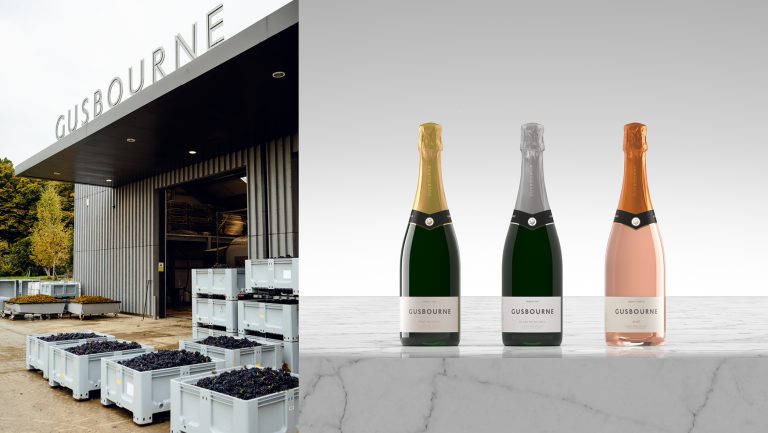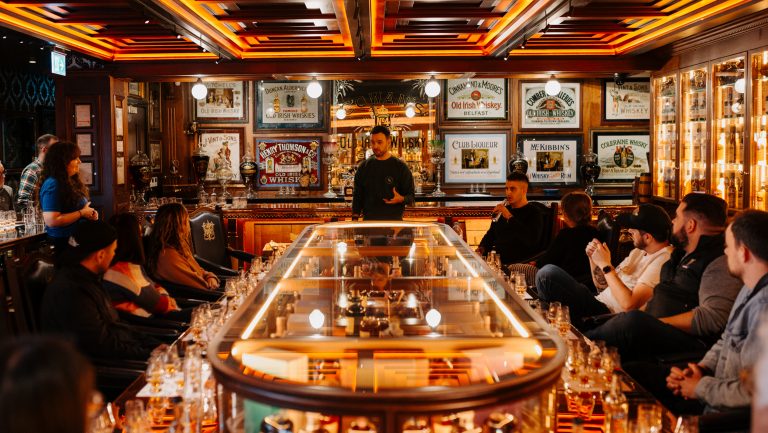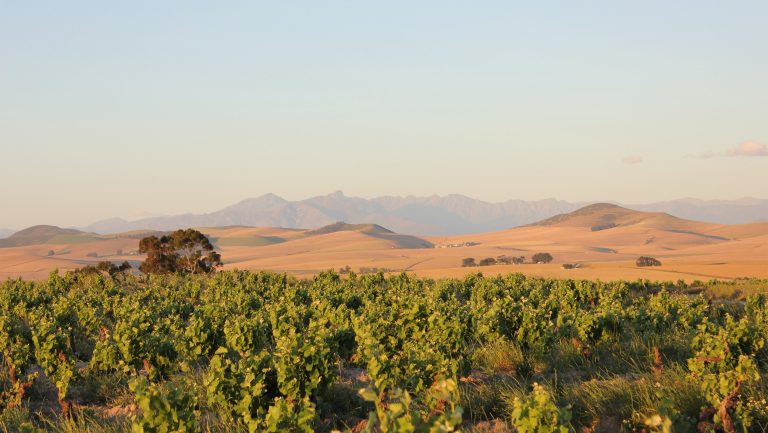Everyone’s talking about English sparkling wine, and rightly so. England’s wine industry is booming. It’s young, dynamic, and exciting—full of passionate, driven winemakers and vineyard managers with ever-increasing skills who are making exceptional wines that are taking the world by storm.
Having worked as a sommelier in the U.K. from 2004 to 2015, I’ve been delighted to witness the meteoric rise in popularity of these wines, both in the U.K. and abroad. Once thought of in Britain as “the patriotic choice,” these wines are now being enjoyed from the United States to Australia, and even in France.
When I left my last head sommelier post to join the British wine company Gusbourne in 2015, I’ll admit that there were a few raised eyebrows. However, I am proud to be working for such a celebrated producer of English sparkling wine at this pivotal time for the industry.

Don’t miss the latest drinks industry news and insights. Sign up for our award-winning newsletters and get insider intel, resources, and trends delivered to your inbox every week.
Growing a New Industry
England’s wine-producing history can be traced to Roman times, but the focus on traditional-method sparkling wines leads us back only to the late 1980s and early ’90s. It was then that pioneering British producer Nyetimber, followed closely by Ridgeview, took the bold and brave step of planting Chardonnay and Pinot Noir vines, with the clear vision of producing top-quality sparkling wines. When these first wines were released, they blew consumers and professionals away, winning blind tasting trophies against top Champagne producers and setting the stage for the English wine industry today.
Over the next 20 years, as more and more people saw the potential for the fields of Southern England to be planted to vines rather than vegetables, the vineyard areas grew. Official figures show that there are currently more than 2,000 hectares under vine and over 130 wineries; these figures are on a course to grow considerably over the next few years.
While most of this activity is focused in the southeastern corner of the country, in Kent, Sussex, and Hampshire, it’s important to note that other areas, including Essex, Norfolk, Suffolk, Berkshire, Devon, Cornwall, Gloucestershire, and Shropshire, all have their own vineyards and respected producers.
As a young industry, we have our challenges, of course. Currently, without a developed winemaking infrastructure, the industry is quite dependent on importing a lot of equipment from other wine producing countries.
Also, most producers are quite small and therefore still reliant on being able to produce and sell wines each year, which can be a risky prospect in such a marginal climate.
However, because the industry is young, we don’t have long-established wine laws and traditions. While most English producers will self-impose quality-driven winemaking practices, there are no strict rules above and beyond the general European Union laws, and this state of affairs allows for much greater flexibility and innovation.

Stepping onto the World Stage
Despite its relative youth, the industry has received widespread recognition for its wines. From the outset, English sparkling wines have won awards in blind tastings against some of the very best in the world. Just last year in a tasting in Paris (organized by British wine expert Matthew Jukes), English sparkling wines beat out Champagne in two of the three categories and tied in the third. As they amass gold medals, trophies, and 90+ scores from respected tasters and global publications, these wines are growing up, emerging as serious contenders on the world stage of traditional-method sparkling wines. Taste one and you’ll see.
It’s exciting that other countries are now starting to recognize the potential of these wines. Even French producers are taking notice. Most notably, Taittinger planted vineyards in southeastern Kent earlier this year to produce English sparkling wine under the label Domaine Evremond.
There’s lots of talent here too—brilliant producers making exciting wines. Noteworthy producers currently exported to the U.S. include Ridgeview, Nyetimber, Gusbourne, Digby, Bolney, Hush Heath, Bride Valley, Chapel Down, Camel Valley, Hattingley Valley, and Wiston. Together, these labels represent a myriad of styles and price points, indicating the diversity of wine that’s being produced.

Differentiating British Sparklers
So what is English sparkling wine, and how can you sell it? Any wine whose label is marked Quality English Sparkling Wine will be made in the traditional method, typically from Chardonnay, Pinot Noir, and Pinot Meunier and with a minimum of nine months aging on the lees, though 12 to 24 months is more common; a few producers opt for 36 months or more.
Buyers may be quick to draw comparisons to Champagne, and while similarities do exist, there’s also much that’s different. The individuality of the region, for one. We often hear that England has the same chalk soils as Champagne, and although that’s not wholly incorrect—indeed, anyone who’s seen the White Cliffs of Dover knows that there are great swaths of chalk running through Southern England—there’s also a patchwork quilt of soils in these vineyards, including much greensand and clay.
There are differences in our climate too. Most notable, perhaps, is the fact that the U.K. is far more influenced by its coastal environment than Champagne could ever be—and it’s the proximity to the coast that helps make grape growing possible. Climatically, the U.K. can certainly be described as marginal. On the 51st parallel, it’s just a little north of what one might think of as typical winegrowing regions. However, with recent shifts in climate, the U.K. is now able to produce fruit that is perfect for making really exciting sparkling wines. A recent survey suggests that the July and August temperatures, though, are starting to cool slightly. This, combined with steadily warmer Septembers, has interesting implications for hang time and phenolic ripeness, which helps create the slightly fuller fruit flavors often seen in the wines.
Selling English Sparkling Wines
As sommeliers and buyers, we love to be able to help our guests explore the wine regions of the world, to discover new, interesting wines, and these bright, fresh, elegant sparkling wines are compelling and exciting. I believe they merit their own place on any wine list.
Price must, of course, be a consideration. English wines won’t ever represent the cheapest sparkling wine option, nor should they. But they do rival the prices of French Champagnes, appearing on retail shelves in the U.S. in the $35 to $50 range, for most NV bottlings. This represent exceptional value for money when quality is considered, and countless blind tasting results have demonstrated how well the English wines can stand up to their more famous counterparts.
The styles available range from crisp, fresh, and fruit driven, to more rich, complex, and autolytic wines. Given this diversity, English sparklers can become a staple on your wine list. Listed by the glass or as an aperitif, an English sparkler is an appealing alternative to better-known sparkling wines. They pair well with oysters and seafood, and stand up to richer dishes that might require the wine’s zest and acidity to cut through any fat element on the plate.
Because this is a growing industry, each year brings new vineyard plantings, new producers, new releases, and an ever-lengthening list of recognitions and awards. It is a growing category worth exploring—full of dynamic producers and exceptional wines that you can introduce to your customers and guests. Adding these wines to your shelves, wine lists, and by the glass programs will help your guests discover one of the most exciting emerging wine regions in the world. I, for one, am unbelievably excited to see what the next 20 years has in store.

Dispatch
Sign up for our award-winning newsletter
Don’t miss the latest drinks industry news and insights—delivered to your inbox every week.
Master Sommelier Laura Rhys, based in London, is the Global Ambassador for Gusbourne, an English sparkling wine company. Her responsibilities include ambassadorial and development duties within the U.K. as well as internationally, and working closely with Gusbourne’s winemaker and vineyard teams. She also judges national and international wine competitions.







